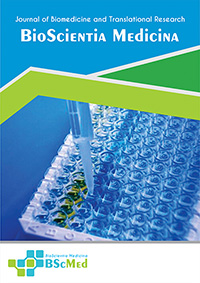Main Article Content
Abstract
Background: Polymyositis (PM) is a cell-mediated inflammatory myopathy for which viral triggers, particularly the Hepatitis C virus (HCV), are increasingly recognized. The convergence of these conditions creates a formidable clinical scenario, often compelling urgent therapeutic intervention despite incomplete diagnostic data. This report explores the management of such a case, highlighting the pragmatic decision-making required when definitive investigations are deferred.
Case presentation: A 48-year-old male with untreated chronic HCV infection (Genotype 1b, viral load 2.8 x 10⁶ IU/mL) presented with a debilitating relapse of severe, symmetric proximal muscle weakness, three years after a similar episode. He exhibited profound weakness (Medical Research Council grade 2/5 in hip flexors) and marked myonecrosis (Creatine Kinase 8,572 U/L). Although comprehensive myositis-specific autoantibodies were negative, a strong clinical and biochemical profile led to a presumptive diagnosis of an acute PM exacerbation. Definitive diagnostics, including muscle biopsy, were deferred by the patient. Empirical treatment with high-dose corticosteroids and azathioprine was initiated, predicated on a careful risk-benefit analysis concerning immunosuppression in active viral infection. This strategy resulted in rapid and significant clinical and biochemical improvement. The patient was subsequently scheduled for direct-acting antiviral therapy to address the underlying viral trigger.
Conclusion: This case underscores the critical challenge of managing severe, presumed autoimmune disease in the face of diagnostic ambiguity. It demonstrates that a therapeutic strategy guided by strong clinical evidence can be effective for controlling acute, disabling flares. Furthermore, it champions a necessary dual-paradigm approach: acute immunomodulation to preserve function, followed by targeted antiviral therapy to eradicate the probable etiological trigger, thereby aiming to prevent future recurrence and achieve durable remission.
Keywords
Article Details
As our aim is to disseminate original research article, hence the publishing right is a necessary one. The publishing right is needed in order to reach the agreement between the author and publisher. As the journal is fully open access, the authors will sign an exclusive license agreement.
The authors have the right to:
- Share their article in the same ways permitted to third parties under the relevant user license.
- Retain copyright, patent, trademark and other intellectual property rights including research data.
- Proper attribution and credit for the published work.
For the open access article, the publisher is granted to the following right.
- The non-exclusive right to publish the article and grant right to others.
- For the published article, the publisher applied for the Creative Commons Attribution-NonCommercial-ShareAlike 4.0 International License.





